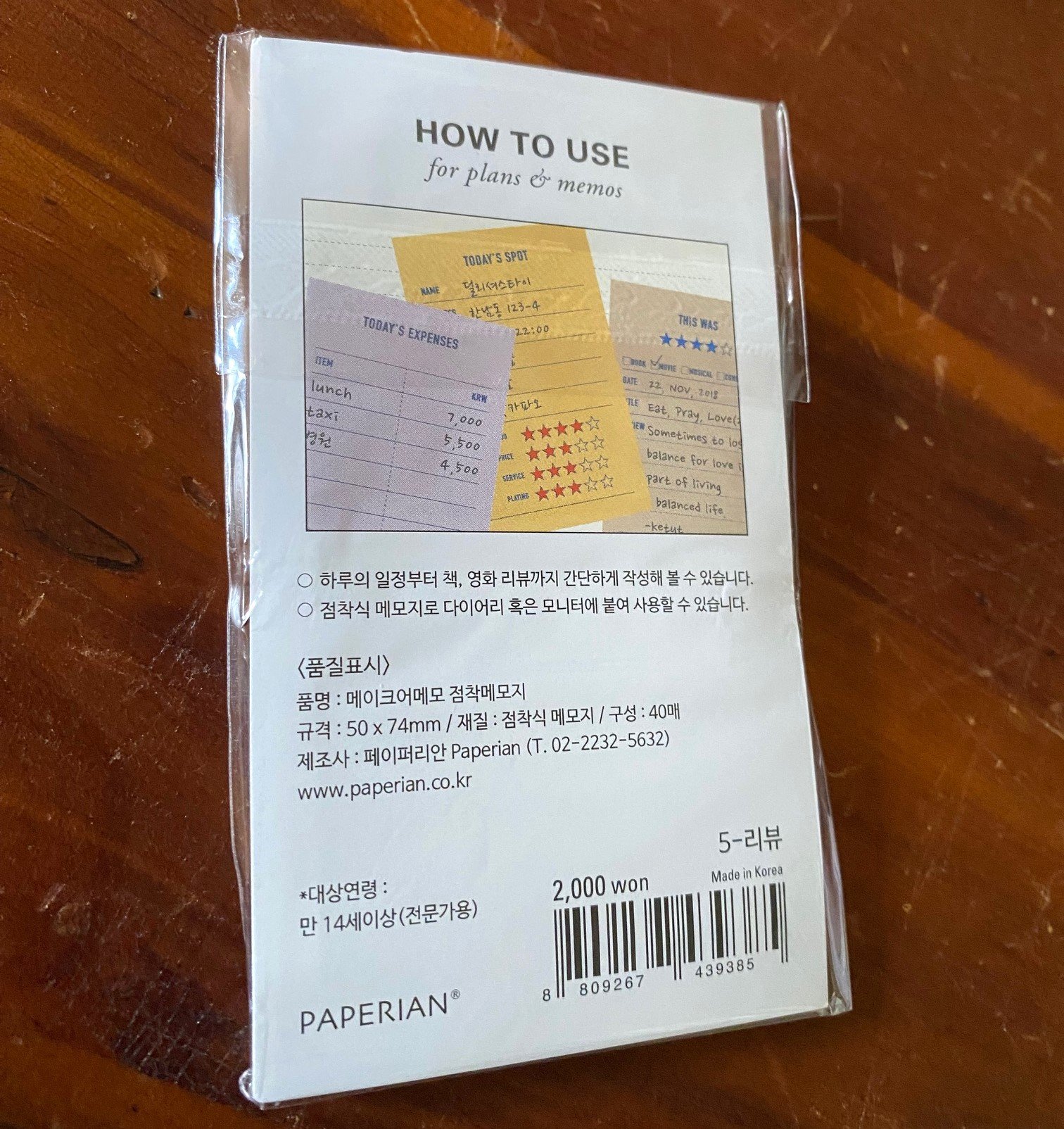(Sarah Read is an author, editor, yarn artist, and pen/paper/ink addict. You can find more about her at her website and on Twitter. And her latest book, The Atropine Tree, is now available!)
In my stationery life there is a tug-of-war between me searching for solutions for my "scattered small pieces of paper" problem and my indulgence in scattered small pieces of paper. This product allows me to indulge in that vice. Wee papers everywhere. Huzzah.
The Paperian Make-a-Memo Pads come in a variety of formats. There are to-do lists, shopping lists, ledgers, planners, and this handy review sheet. As a frequent reviewer of both stationery and books, it was the format that seemed most useful to me. It has five stars at the top for coloring in a review score and spaces for the date and a description. I found them immediately handy in reviewing the notes themselves.
Each pad contains 40 sticky notes. The paper is good quality, better than standard office sticky notes. It is coated in a way that makes liquid ink slow to dry, so it works best with ballpoint, rollerball, or pencils.
On the downside, the sticky isn't very sticky. If you want truly sticky sticky notes, these aren't them. However, I prefer gentler adhesive, especially if I'm using them in books or journals. Archivists hate sticky stuff! If I need a small piece of paper to stay put, that's what cute washi tape is for. (I have to justify my washi stash somehow.)
These wee memo pads cost $3.60 each at JetPens, which is a fantastic deal. It's right in that "I need to add a few dollars to get that sweet free shipping" range, and they're cute and useful at the same time. Perhaps a miss if you need super sticky notes, but if you're as addicted as I am to scattering your notes across a debris field of tiny paper, these are a fantastic addition to one's desk.
(JetPens provided this product at no charge to The Pen Addict for review purposes.)
Enjoy reading The Pen Addict? Then consider becoming a member to receive additional weekly content, giveaways, and discounts in The Pen Addict shop. Plus, you support me and the site directly, for which I am very grateful.
Membership starts at just $5/month, with a discounted annual option available. To find out more about membership click here and join us!






















